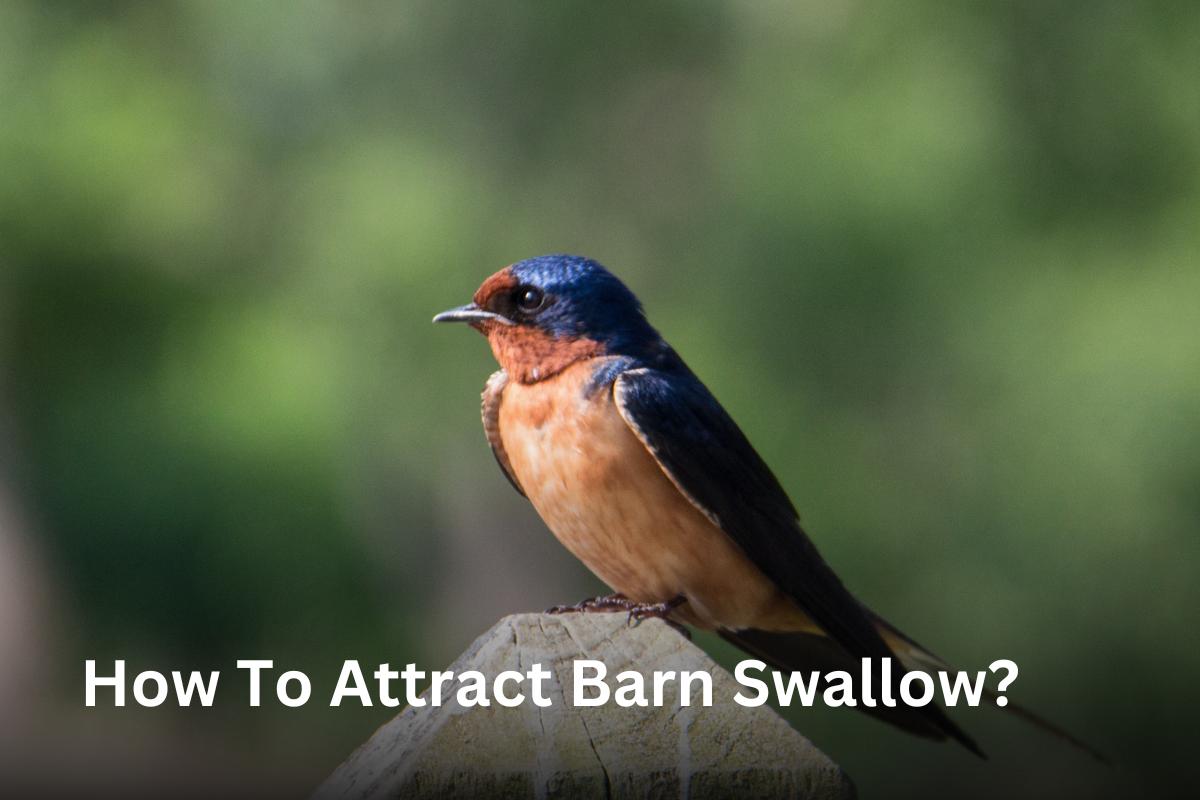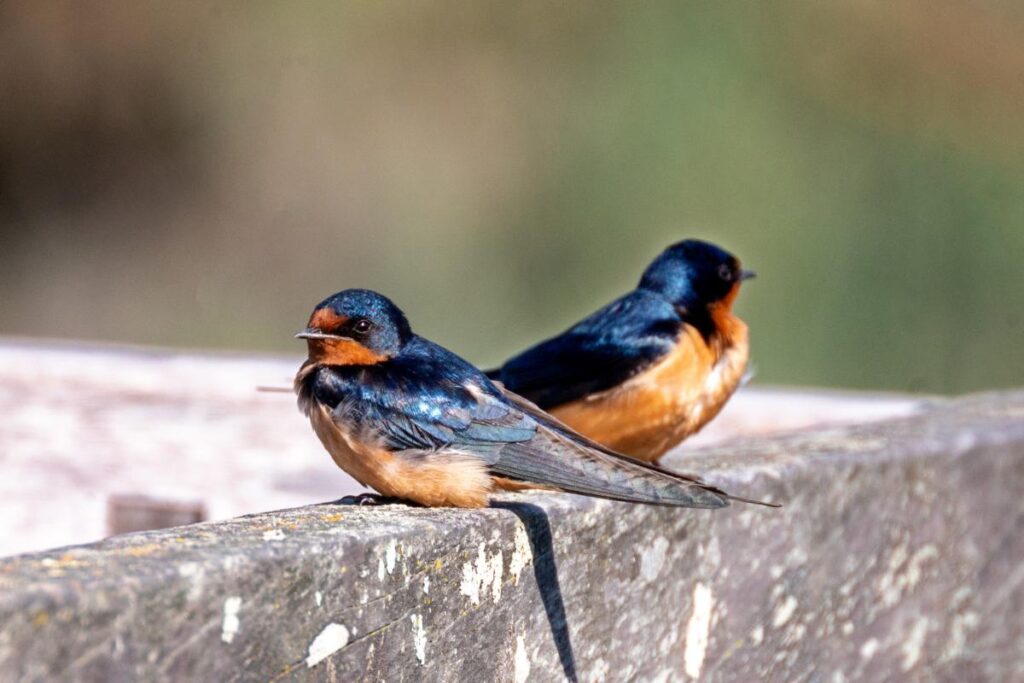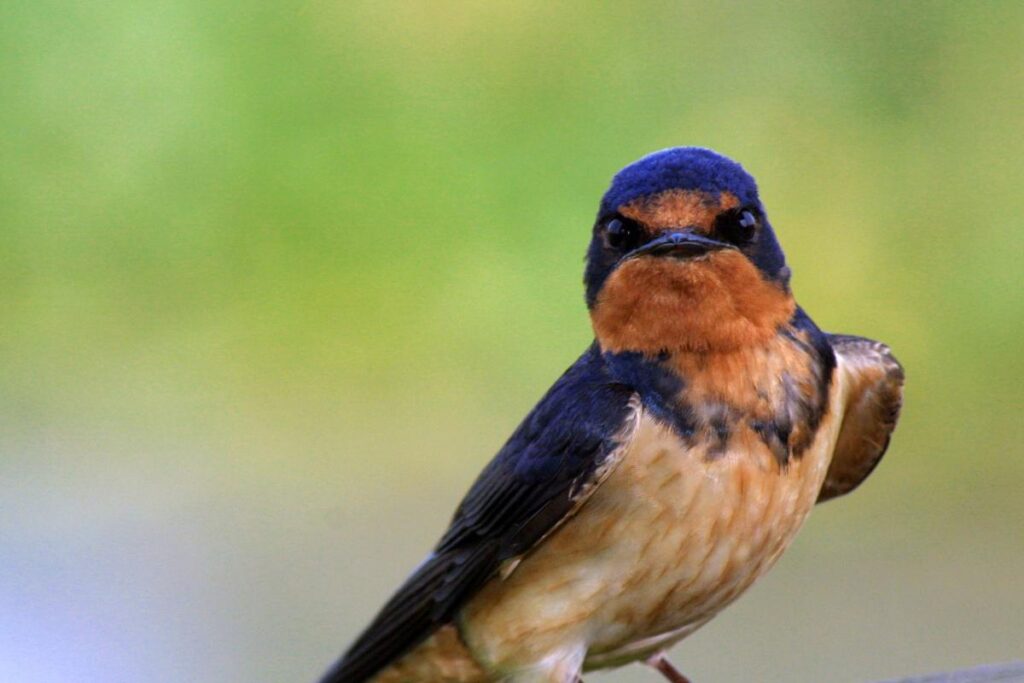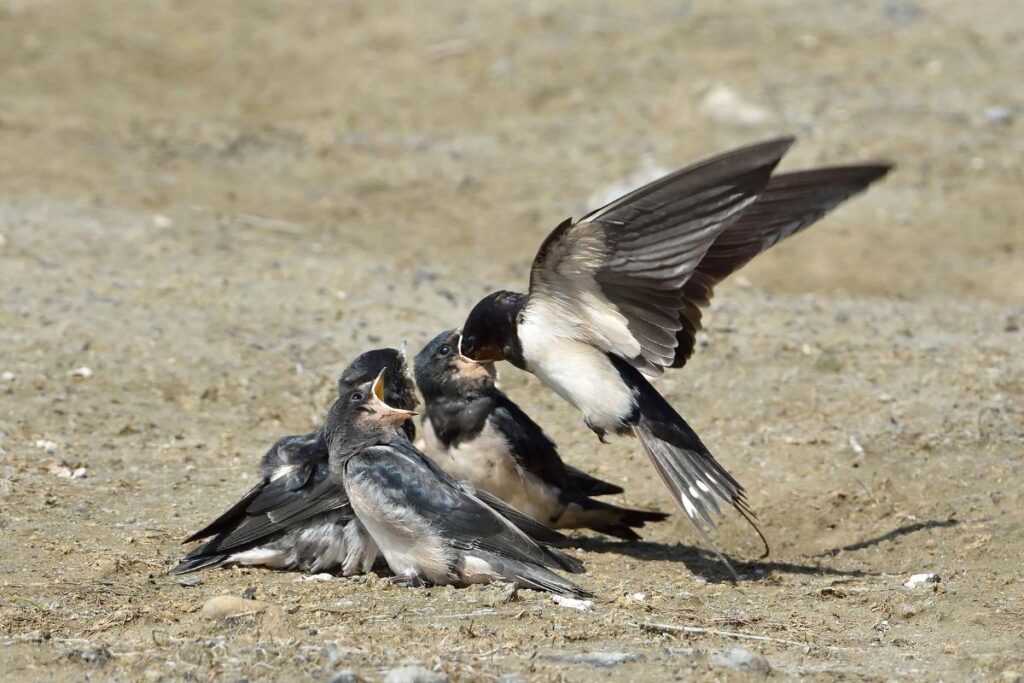How To Attract Barn Swallow?

Barn swallows are delightful birds known for their graceful flight and their role in controlling insect populations.
These birds are often welcomed by farmers and gardeners due to their appetite for insects, including mosquitoes, flies, and beetles.
If you have ever wondered how to attract these beautiful creatures to your yard, you’re in the right place.

This guide will provide you with comprehensive steps to create a welcoming environment for barn swallows.
From providing suitable nesting sites to ensuring clean water, we will explore various tips to make your yard appealing to these agile birds. So, without any further delay, let’s dive into this blog post.
Understanding Barn Swallows
Physical Appearance and Behavior
Barn swallows are medium-sized birds known for their distinctive appearance. They possess long, pointed wings and a deeply forked tail.
Their underparts are glossy blue-black, contrasting with their rich chestnut-colored underparts. They feature a red face and throat, complemented by a dark blue crown and a white spot above the bill.
These birds exhibit remarkable agility in flight, frequently observed darting through the air to catch insects on the wing.

Migration Patterns and Nesting Habits
Barn swallows are migratory birds, with their breeding grounds spanning North America, Europe, and Asia. In winter, they migrate to warmer regions such as central and South America, Africa, and southern Asia.
Their migration pattern involves arriving at breeding grounds in late spring and departing in early fall.
During breeding season, barn swallows construct cup-shaped nests using mud, grass, and feathers. They commonly nest in colonies, affixing their nests to vertical surfaces like building eaves, bridges, or cliffs.
These birds are known for their site fidelity, often returning to the same nesting location annually.
Read More: How To Attract Whippoorwills? >>>
Diet and foraging habits
Barn swallows are primarily insectivores, with their diet consisting mainly of flying insects. They are particularly fond of flies, aphids, beetles, dragonflies, moths, and even house martins and sand martins.
During winter, they primarily rely on ants and dead or sluggish insects due to unfavorable weather for flying.

They are also known to eat crickets, grasshoppers, and other species like Craneflies, Robberflies, and Houseflies.
These agile birds are strong flyers and usually forage for food on the wing, often in large flocks.
7 Tips To Attract Barn Swallow
Here are the seven tips to attract barn swallows:
Providing Nesting Sites
Install Nest Shelves: Place nest shelves or ledges under the eaves of buildings, barns, or sheds. Barn swallows prefer flat, sheltered surfaces to build their nests.
Protect Existing Nests: If barn swallows have already started nestling in your yard, avoid disturbing the nests and allow them to return and reuse them each year.
Create Mud Puddles
Provide Mud Sources: ensure there are mud puddles or areas with moist soil nearby, particularly during the breeding season. Barn swallows use mud to construct their nests.
Keep Puddles Moist: Regularly moisten the area to ensure a consistent supply of mud for nest building.
Maintain Open Areas
Open Spaces for foraging: Ensure there are open areas like fields, meadows, or large lawns where barn swallows can hunt for flying insects. They need open space to swoop and catch their prey.
Limit Tall Vegetation: Keep tall vegetation to a minimum in their foraging areas to provide clear flying space.
Provide Water Sources
Attract Insects: Having a water source, such as a pond, stream, or birdbath, can attract insects, which in turn attract barn swallows.
Ensure Clean Water: Keep the water source clean and free from chemicals to maintain a healthy insect population.
Avoid Using Pesticides
Promote Insect Population: Avoid using pesticides and insecticides in your yard, as barn swallows rely on a healthy insect population for food. Pesticides can reduce their food sources and harm the birds indirectly.
Offer Perching Spots
Install Perches: Provide perching spots like wires, fences, or small trees. Barn swallows use these perches to rest and survey their territory.
Maintain Natural Perches: Preserve natural perches such as dead branches or posts around your yard.
Create a Safe Environment
Minimize Disturbances: Reduce human activity and loud noises around nesting and foraging areas to keep the environment peaceful and stress-free for the birds.
Protect from Predators: Keep the area safe from predators like cats and larger birds of prey. Consider using predator guards on nest sites and keeping outdoor cats indoors, especially during the nestling season.
Conclusion
In conclusion, attracting barn swallows to your property can enhance your outdoor space with their graceful flight and benefit the environment by helping control insect populations.
By providing suitable nesting sites, creating mud puddles, maintaining open areas, providing water sources, and avoiding pesticides, you can attract these beautiful birds to your yard.
Observing barn swallows in their natural habitat can be a rewarding experience for bird enthusiasts and nature lovers alike, offering both aesthetic pleasure and practical benefits.
Frequently Asked Question
What do barn swallows like to eat?
Barn swallows primarily feed on insects, making them excellent natural pest controllers. They are adept flyers, capturing insects like mosquitoes, flies, and beetles mid-air. Their diet helps maintain a balanced ecosystem by controlling insect populations.
What time of year is best for attracting barn swallows?
Barn swallows are migratory birds, so the best time to attract them would be during their breeding season when they are looking for places to nest. This varies depending on the region, but it is typically during the warmer months.
What smells do barn swallows hate?
Barn swallows are repelled by strong smells, particularly those of essential oils like peppermint. They also find the scent of garlic and vinegar unpleasant. These smells act as irritants to the birds, making them uncomfortable.
Where is the best location for a barn swallow nest box?
Barn swallows like to build their nests in open areas near water or fields, where they can easily find insects for food. To attract them, place a nest box under the eaves or rafters of a building, with a clear line of sight to open spaces.
How to find barn swallows?
Barn swallows are often found in open areas such as fields, meadows, farmlands, and near bodies of water. They prefer locations with ample open space for hunting insects.
